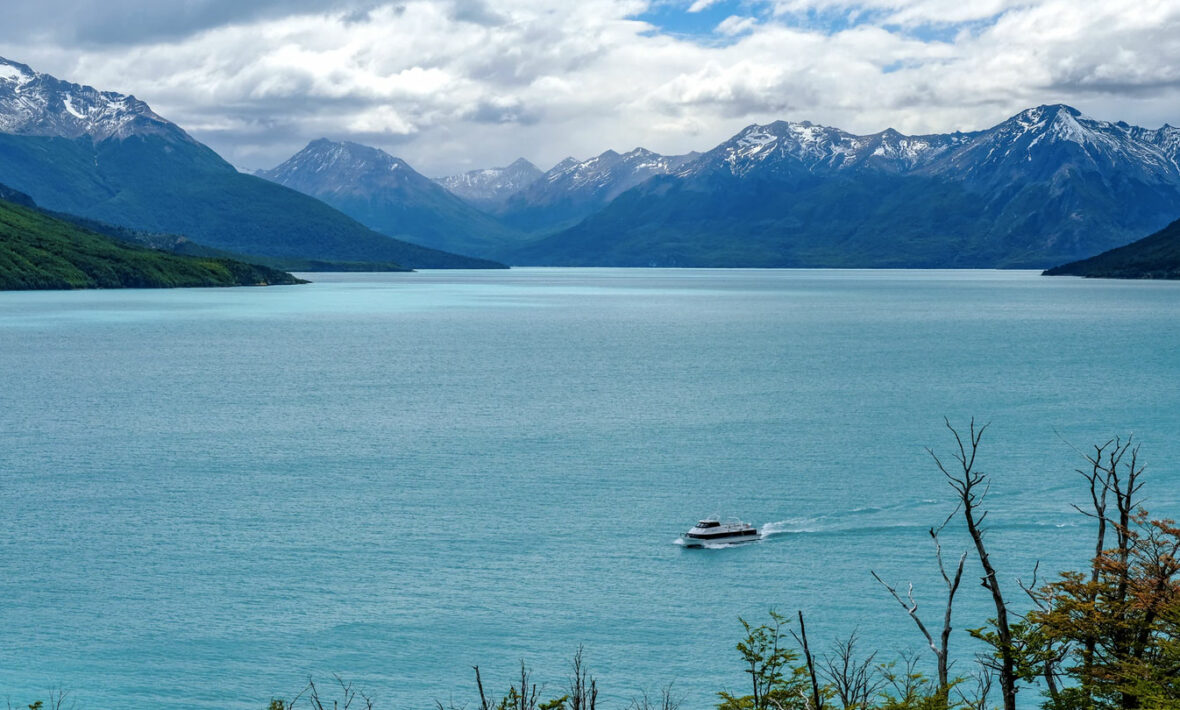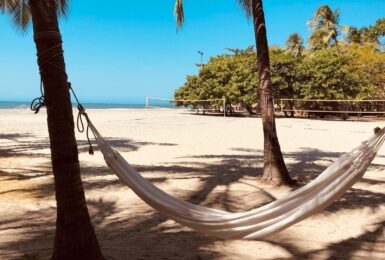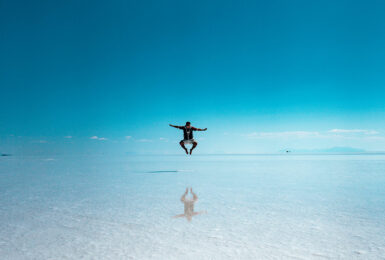
Low bright sky, turquoise lakes, sharp colourful mountains, endless pampas. This is Patagonia – a part of our planet almost untouched by humans. Pure and wild, it doesn’t have clear territorial borders, but is partly owned by Argentina, and partly by Chile. I arrived here with my best friend and its wilderness left us speechless.
I started dreaming of travelling to Patagonia while at university I was offered to partner with the outdoor clothing and gear company (you might have heard of it), Patagonia. Its founder Yvon Chouinard travelled here with his friends to climb and came up with an idea of creating great climbing gear that was not harmful to the mountains and the environment as other equipment often did. When we arrived, we understood why. The beauty of this area, the purity of its nature makes you want to do everything you can to preserve it.
When we first hit the road, I did not understand why our 4×4 car was moving from side to side on the road. So, I slowed down but it felt like the car was still being pushed—it was the wind. One of the main features of Patagonia is the strong winds that blow here all the time, without ceasing, throughout the day, all year round. This is definitely not the case in Europe and much of the world, so you have to be very careful when driving.
Have you ever felt completely insignificant in comparison to nature? Well, get ready to feel precisely that in Patagonia.
El Calafate
We started our Patagonia road trip in the small town of El Calafate in Santa Cruz province, which sits on the hill next to Lake Argentino. Isolated from the rest of the world, the town is cute and friendly, with some great restaurants along the main road. Make sure you try a real Argentinian steak, a traditional local cordero asado (roasted lamb shoulder traditionally served with potatoes) and, of course, some amazing red wine.
I got the impression that a constant rainbow hangs over Lake Argentino. The climate here is rough and it rains a lot and heavily, however as the winds blow strong you will often see bright blue skies. When driving around the lake you won’t miss the hundreds, or even thousands of gorgeous pink flamingos that call this beautiful place home. What more to dream of?
Perito Moreno
As El Calafate is the gateway to Los Glaciares National Park, our next stop was the famous Perito Moreno Glacier. The glacier feeds off the Andean Southern Patagonian Ice Plateau which is the third largest freshwater resource on the planet after Antarctica and Greenland. There are 356 glaciers of all forms and sizes in Patagonia, but Perito Moreno is for sure the most beautiful one.
Standing tall at 74 metres above the water and another 100 metres underwater, this ice formation spreads over 250 square kilometres (roughly 97 square miles). Pretty surreal, hey! What’s interesting is that despite the effects of global warming, it is one of the very few glaciers that is continuing to grow, not retreating, like most others.
The show is never-ending here. You can watch the detachment of ice blocks of different sizes from a short distance, hear the roaring they produce, and then watch them turn into beautiful blue floating icebergs. Make sure to stop at a café nearby and have a glass of whiskey on the rocks. The only difference is that these ‘rocks’ are 17,500-18,000 years old and are actually pieces of ice from Perito Moreno itself. You will be drinking whiskey with pieces of the remnant of the last Ice Age.
El Chaltén
The next day, we set out to drive more than 200 kilometres north from El Calafate to El Chaltén. When you’re driving along the turquoise lakes and the foothills of the Andes, the surroundings resemble Martian landscapes. You are guaranteed to see groups of cute llama-like guanacos running around the hills, some rheas which are distant relatives of ostriches, and Andean condors flying gracefully while looking for their next prey.
El Chaltén is a starting point if you would like to trek the peaks of Cerro Torre and Mount Fitz Roy. If the weather is nice as you drive towards it, you will see the Mount Fitz Roy in all of its rugged, snow-capped beauty. Even beginners can hike here; the two lookouts, Condores and Aguilas, are both very easy hikes with great views as your reward at the end. To say it was breath-taking would be an understatement.
Torres del Paine
Having El Calafate as your basecamp for your stay is ideal for road tripping through Patagonia. One day we travelled north to El Chaltén, but if you drive the same distance south, you will arrive at Torres del Paine, in Chile.
Soaring vertically above the Patagonian steppe, the granite pillars of Torres del Paine dominate the jaw-dropping landscape. The views are humbling and surreal. Look out for foxes, Andean deer and guanacos along the way, and if you wait patiently, you might be lucky enough to spot a puma.
On the way back we passed by a few houses of Patagonian gauchos – nomadic horsemen who live in the rural wilderness. How do you spot a gaucho? He will be alone, dressed in a poncho and a woollen hat with a cup of mate or a pipe in his hand, and will always have his proudest possession in tow – his horse.

Puerto Natales & Punta Arenas
From Torres del Paine you can travel south to the port town of Puerto Natales which sits on the bank of Almte Montt gulf. Make sure to pay a visit to Monumento de la Mano, an enormous stone sculpture of a human hand protruding out of the ground. It’s located just a 10-minute walk from the city centre.
If you go even further south, visit the humble town of Punta Arenas located on the Strait of Magellan, which connects the Atlantic and Pacific oceans, it’s often used as a base for excursions to the surrounding wilderness.
When is the best time to travel to Patagonia?
As you may know, in Patagonia, people walk upside down. When it’s summer in the Northern hemisphere it’s winter in Patagonia. The high season here begins in November and ends in March. We travelled through the Christmas holidays, so the weather was mostly sunny and clear.
What should I pack for Patagonia?
It is worth taking a full set of clothes with you: starting with shorts and slaps (AKA flip flops, jandals or thongs depending on where you’re from) and ending with winter jackets and thermal underwear. The weather here is unpredictable, but I warned you about the crazy strong winds – make sure you put on a scarf not to catch a cold. My personal essentials would be a backpack, hiking boots and a camera. You don’t want to miss a chance to capture all this beauty.
With its glacier-carved peaks and fjords, Patagonia remains one of the wildest places on Earth. Travelling across it made me feel small and wild. Here, spaces are large, as are the silences that fill them. We were not gone with the Patagonian wind, but we were definitely blown away by its pure beauty.




